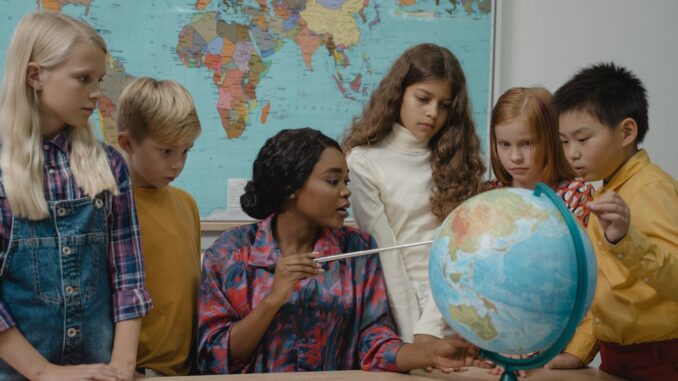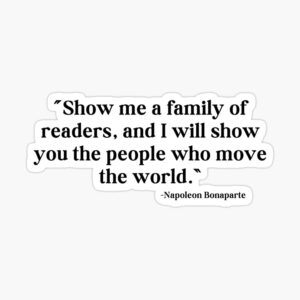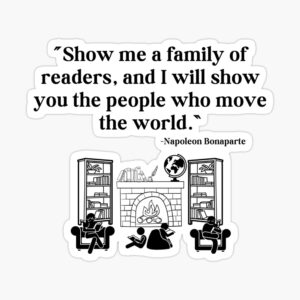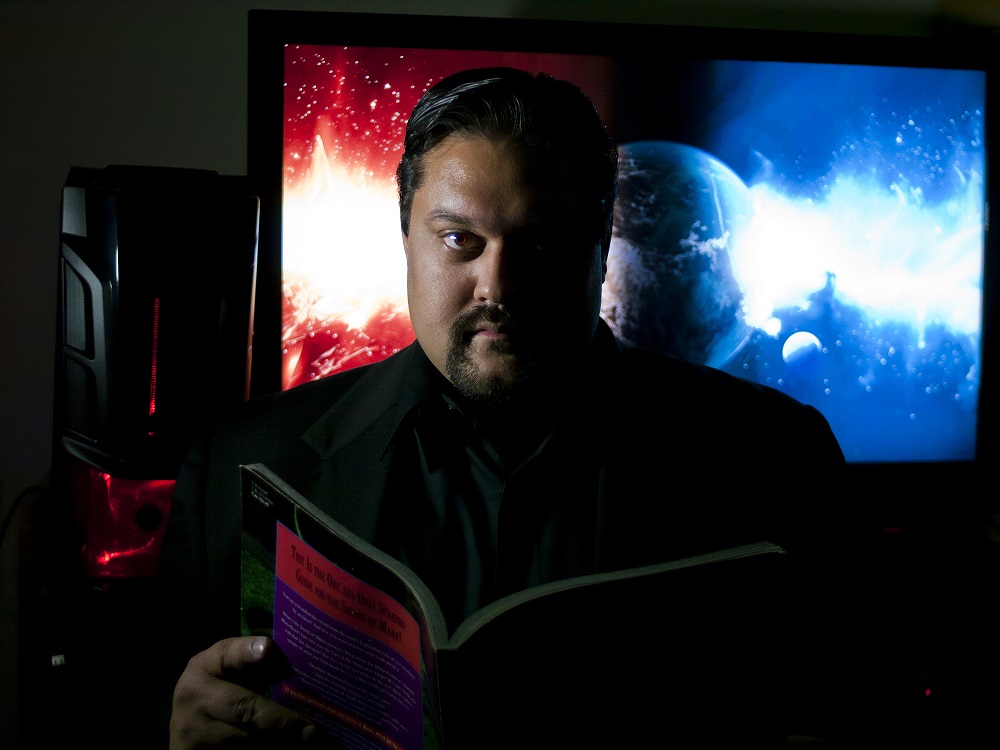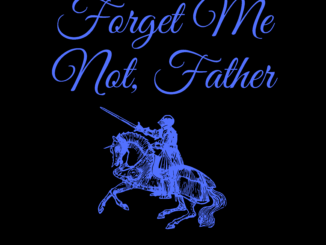
It is sad, but not surprising, to know that a growing number of college students across the United States are struggling with reading comprehension. A fact that is based on both anecdotal evidence and recent statistics which suggest that this problem will only worsen in the coming years. Despite knowing this, it is still surprising regarding the extent of this inability to read books from cover to cover and is alarming if you read an article from The Atlantic which talks about not just college students in general, but points out that this is a problem for elite colleges as well.
The skill to read is a fundamentally important one that develops the ability to comprehend complex texts which is crucial for success in higher education and real life in general. Yet many students are ill-prepared to meet the demands for both academic reading and life in general. The causes of this decline in literacy are numerous, ranging from the ever-increasing pervasiveness of digital distractions to current issues within the educational system as well as the changes in culture and the family unit. As literacy rates plummet, the long-term effects on students and society at large are becoming increasingly apparent.
At elite colleges like Columbia, many students are showing up unprepared to read full books. It’s not that they don’t want to, @rosehorowitch writes. Middle and high schools have stopped teaching them how: https://t.co/mC5JpaC15M
— The Atlantic (@TheAtlantic) October 1, 2024
It is easy to immediately point to social media, digital consumption, and smartphone usage as one of the main reasons for the severe decline in reading skills. As one of the most significant factors contributing to this decline, the overwhelming presence of readily available social media and video content is a constant distraction in students’ daily lives of all grades.
For college students, they often claim that they lack the time to read books, but how is that possible? How is it that the college students of today don’t have the time compared to college students of 30-40 years ago? The issue doesn’t really appear to be a lack of time, but a mismanagement of it. Research suggests that they are spending substantial time on platforms like TikTok, Instagram, X, and YouTube than anything else. According to data from the National Literacy Institute, attention spans and the ability to focus are at an all-time low due to early and constant exposure to digital content .
This constant bombardment of, not just long-form videos, but also short clips detracts from the time students could spend reading, reinforcing a culture of immediate gratification rather than one of deep comprehension and reflection. It also negatively affects attention span and focus which some studies refer to as “TikTok Brain.”
A #giveaway you won’t want to miss. Sign up for our e-newsletter to be entered to #win! http://t.co/8JDJ0ISfhg #GSAw pic.twitter.com/8DM2P9hTIC
— CliffsNotes (@Cliffs_Notes) July 25, 2015
However, even before the rise of the internet, coupled with smartphone usage, and the constant bombardment of entertainment, college students were already looking for ways to circumvent the need to read the books recommended in classes. Even in the 1980s and 1990s, reading skills were not on par with their grade level for a large number of students. Many are the times I could count where I would cringe hearing high school classmates struggling to read at their grade level when it sounded like they had never finished middle-school. They would read very slowly, stuttering and struggling with every other word. One could only imagine how they struggled with reading in college.
Of course, that’s where “workarounds” came in which were published in the form of CliffsNotes and Sparknotes. These were a way to read a summary of the book and learn the potential questions that would be asked by the teacher, professor, or a test. It was the way for students to save all that time reading an entire book so they could go hang out with friends, play video games, or play sports. Yet, these weren’t only purchased and read by those who struggled to read, but even those that could read during that time period.
Just so that both groups of students could save time and effort while giving the excuse that there weren’t enough hours in the day.
Whatever you can say about the 80s and 90s kids, at least they were still hanging out in social gatherings and touching grass.
While these time-saving resources were helpful for grasping the basic plot of a book, it came with a price. It cheated the student of the full literary experience. Depth, complexity, and nuance of a novel can be lost in the cliff notes leaving students with a superficial understanding of the material. Reading the cliff notes, rather than the book itself, also robbed them of the ability to sharpen their comprehension skills. Why try to figure out the theme, or themes, of Moby Dick when you can read about the themes from someone else?
Cliff notes were a stepping stone to the broader problem: reading is increasingly seen as a task rather than an activity to be savored and reflected upon or a skill to be mastered. A skill that opens you up to greater understanding, comprehension, empathy, and an impressive vocabulary.

As a child of the 80s and 90s, I remember the great programs that were around, and still are, that helped to motivate young people to read. Programs like Pizza Hut’s Book It! initiative and the Scholastic Book Club which incentivized children to read, offering rewards like pizza for reaching reading milestones. Personally, there was nothing more awesome than going into the local Pizza Hut and getting a personal pan pizza as a reward and playing the Teenage Mutant Ninja Turtles or The Simpsons arcade games while waiting for that delicious treat (yes, Pizza Hut food once tasted good).
Like myself, these programs were a formative part of many childhoods of that period, sparking a love of reading that lasted into adulthood. The Book It! program, which started in 1984, motivated children to read by rewarding them with personal pan pizzas while the Scholastic Book Club provided affordable access to popular books. These programs helped to instill a sense of pride and accomplishment in young readers, but similar incentives are less common today, contributing to the decline in reading engagement.
Sadly, while both Pizza Hut and the Scholastic Book Club programs continue to exist, they are not as popular or talked about like they were back then. Mostly due to declining interest and participation. Scholastic, for example, said that there were 45,000 participants during the 2022-2023 period. And while the Scholastic program is still a great thing having affected millions of children over its 60 year history, the number should have been far higher.
Despite what critics of Pizza Hut’s Book it! program have said, it was a very positive experience for children. Yes, it incentivized teachers to promote Pizza Hut and yes, pizza is junk food. So what? It helped kids get into reading and if they were raised properly, having pizza every now and then is not detrimental.
But we also need to talk about the decline of the American education system which is a tragedy of epic proportions that has yet to be fixed. And so the decline in reading skills is not solely the fault of students; it is also a symptom of systemic failures within the education system. According to the NAEP, only 32% of fourth-grade public school students perform at or above a reading proficiency level. In the United States, 45 million adults cannot read, and 54% of adults’ literacy skills are below the sixth-grade level. And it was discovered that there was a 3-4 point drop in reading scores between 2020-2023 for 13-year-old students.
Many teachers and educational institutions are failing to equip students with the reading skills they need to succeed. A 2022-2023 report on literacy revealed that the United States continues to struggle with improving literacy rates, and the education system often rewards mediocrity, allowing students to graduate without having mastered essential skills which started with President George W Bush’s asinine No Child Left Behind Act which was passed back in 2002. All of the aforementioned factors have resulted in the fact that today, 130 million adults are incapable of reading a simple bedtime story to children (out of a population of 330 million).
From The Atlantic article we see how college professors are finding out from their students how teachers from middle and high schools have changed their curriculums that eschews reading long form books. Teachers are no longer assigning books for students to read. Instead, students are reading shorter forms of literature such as news articles, poetry, and excerpts. This shift in school curriculums has resulted in a generation that can’t read a book from cover to cover. That hasn’t developed the discipline or focus to do so.
As a further result, these students, who are now young adults, have not gained the ability to have significant discussion or debates, lose track of the micro and struggle with the macro, while lacking empathy or the ability to see through another person’s experience or walk in their shoes.
Which has given rise to an attitude of obstinance and inability to come to grips with reality or the acceptance of facts and statistics regardless of their reading comprehension skills. As seen to an unbelievable degree thanks to video content. In many cases, students of this current educational system, will shut down, deflect, yell as a way to drown out opposing views, offer up verbose word salads, or simply remove themselves from the situation when pressed to defend their positions or define the words they use.
On top of teachers failing to educate and prepare students, they have shifted away from educating to indoctrination – a subject for another time.
Of course, we have to also look at the Chinese elephant in the room. The COVID-19 pandemic lockdowns has further exacerbated literacy issues, specifically among younger students. According to various outlets and new studies, students across all grade levels are still struggling to make up for the ground they lost during the pandemic which forced children, the demographic least affected by Covid, to not attend school and miss out on important, formative experiences for a prolonged time. According to the Center on Reinventing Public Education, third-grade literacy dropped from 72% in 2019 down to 65% after the lockdowns. Which offers a compounding issue as they get older.
Standardized test scores in reading and math have plummeted since 2019. The average ACT composite score in the fall of 2024 was the lowest in 32 years, with only 40% of students meeting the college readiness benchmark for reading, according to a report by the Senate Committee on Health, Education, Labor, and Pensions. This is a 5% decline from pre-pandemic levels which highlights the long-term educational consequences of remote learning and the over-reliance on screens for both entertainment and education.
During lockdowns, children and young adults spent more time watching television and playing video games than engaging in educational and social activities, a trend documented by the surge in video game sales during the pandemic. While gaming, and some other forms of entertainment, are not inherently harmful and offer a degree of social activity depending on the type of game or hobby, the excessive time spent on these activities further diminished the time students dedicated to reading and academic work.
In trying to compete with entertainment, teachers adapted a more infotainment approach to education which appears to be highly detrimental to the literacy rate of these younger generations. This shift further compounded the issue that many experience with attention span and focus.
However, there is one major factor that is to blame for the prevalent issue of illiteracy that allows technology, culture, social media, and education to have such an impact: families. Not just the huge decline of the nuclear family, but families, whether nuclear or otherwise, that are ill-equipped to raise their children in this techno-centric world.
Children at ever-younger ages are being introduced to, and use, smartphones to the detriment of their development all because parents can’t be bothered to spend quality time with their kids or utilize better alternatives to keep their children occupied. Or, as we can see from the data, no longer have the requisite ability to read to their kids. The result is that more and more studies are coming out warning parents about the drastically negative effects on academic performance, social skills, mental health, and eye strain which results in a horrible and debilitating addiction.
There is no excuse for parents to not read with their children. Even if it is only for 15 minutes a day. The benefits for children far outweigh the small investment of time from parents. Reading to your child, no matter what their background or environment is, has the same effects across the board: they will score far better than children who aren’t read to, reading skills develop faster, and it has a significant compounding effect on both reading and cognitive skills that will for the rest of their lives.
Reading to your children will help them flourish, possess the ability to focus, and not be as susceptible to the pervasive and detrimental effects of technology, social media, or even the educational system. It starts at home. Parent’s need to stop using smartphones and YouTube as digital babysitters for the negative effects are many and great that will follow them for the rest of their lives.
Yes, even watching videos is harmful for child development. There is a reason why people who watch large amounts of TV are called couch potatoes. Watching TV doesn’t stimulate the brain in any significant way and leads to “brain rot.” Which shot up quite a bit during the lockdowns as people just sat on their couches and watched YouTube, Netflix, Hulu, etc rather than reading or playing video games. Yes, video games do provide mental stimulation, depending on what kind of game you are playing, and even has other benefits unlike watching TV.
But neither of these hobbies can compare to reading.
Parents need to spend time and read with their children. Parents need to teach themselves how to read for the benefit of themselves but, more importantly, for their children. There needs to be a massive wakeup call for everyone, otherwise future generations will continue to get dumb and dumber.
It all starts and stops with the family.
One of the best quotes about reading comes from Napoleon Bonaparte who is attributed to have said, “Show me a family of readers, and I will show you the people who move the world.” His quote highlights the transformative power of reading. Yet today’s young adults are finding it harder than ever to engage in meaningful reading habits.
With children being introduced to technology at younger ages, the issue of literacy will only worsen. As we have seen, studies show that early and excessive use of digital devices can impair a child’s ability to focus for extended periods, making it difficult to engage in the deep reading required for academic success. Making it harder to have deep and meaningful discussion. Should this trend continue, future generations will be even less prepared to handle the demands of higher education and professional careers. Will be unable to take this country into a positive direction.
Reading is more than just a skill—it’s a gateway to critical thinking, creativity, and personal growth. As Napoleon’s quote reminds us, readers are the ones who move the world. But if we want to reverse the current trend, Parents, educators, and policymakers must prioritize literacy and child raising in ways that adapt to the realities of the digital age. Promoting incentives like Book It! and fostering a culture that values reading can help rekindle students’ interest in books. Otherwise, the growing illiteracy crisis will continue to hinder both individual achievement and societal progress.
But it starts with the family. Which is why we will continue to see an ever-increasing divide between children from families who read to them and families who don’t unless steps are taken to rectify this issue.
Don’t believe this is true?
Just take a look at what kind of people are coming out of our colleges. Soon enough, the phrase “you sound like a college student” will have a wholly different meaning.
Author’s Note: Support this site by donating via Paypal or even checking out our merchandise on RedBubble where you can find designs that cater to writers and readers. Money donated and raised goes into paying for this website and equipment.
Napoleon Quote text design (Black or White text version) and family design (Black or White text version)

